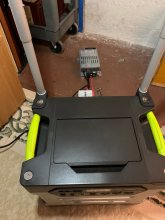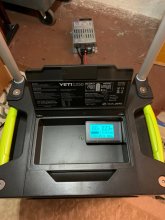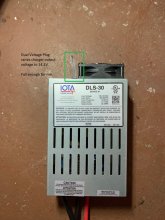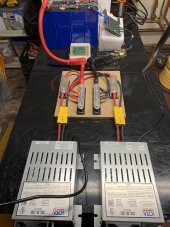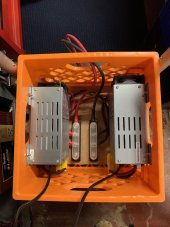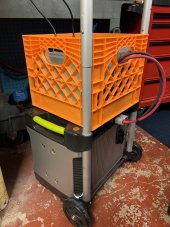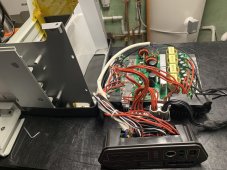Bob142
Build more, learn more.
Thanks to what I've learned from so many people on this forum I've been able to level up my modified Goal Zero Yeti 1250 again. This time I took out the Lion UT1200 LFP battery and put in 4 EVE 280Ah LFP cells that I got via @Craig, and added an Overkill 120A 4s BMS. Goal Zero must have seen the future because the cells fit into the battery bay perfectly with just enough room to the side for the BMS and battery monitor.
Some highlights for me on this build:
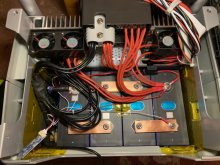
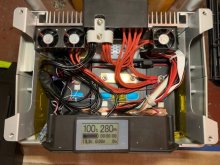
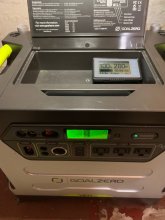
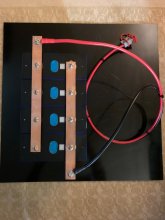
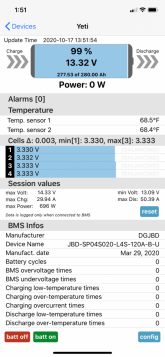
(Yes, I fixed the red balance lead that got pulled a little too taut.)
Some highlights for me on this build:
- Finally put together a DIY LFP battery. Now that I've done it I don't know what took me so long.
- Made my own busbars out of 1/8" x 1" 110 copper bar stock (thanks to @backwash for the link). Didn't have a drill press so I bought this WEN for $89 and it worked well for me. I made three busbars for the battery cell connections and two long ones for top balancing in parallel. (Wish I saw @Bob B's comment about using a center punch a little earlier. Will do that next time.)
- Followed @FilterGuy's top balancing tutorial and charged the cells in series with the BMS first, then used a 15V 40A lab power supply to finish the job with the cells in parallel. (There should be zero drama doing it this way if you follow the instructions carefully. It also goes fast compared to just putting the cells in parallel.)
- Added a TF03K shunt-based battery monitor because the GZ internal monitor uses voltage for state of charge since it was a lead acid system originally. (I tried a Drok hall effect battery monitor in the initial system customization and it turned out to be useless.)
- Learned that the Overkill BMS short circuit protection works... and that I shouldn't let my guard down in my exuberance to finish a build.





(Yes, I fixed the red balance lead that got pulled a little too taut.)
Last edited:



